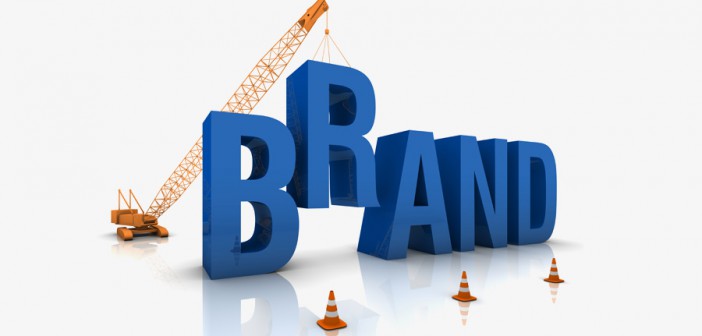Every business needs a brand, of course, but not every small business owner is adept at creating one. Fret not! We’ve outlined key small business branding elements to help you build or remake one for your endeavor.
What Is a Brand?
“A brand is what distinguishes one company or product from another,” explains Juily Gite, a design consultant for Staples® Design Services. “It is a promise to the consumer, communicating to the consumer what to expect when they buy from you; whether your brand is built on ‘fun’ or ‘easy to use,’ or ‘looking cool,’ it serves as a way to make the buying decision easier for a consumer faced with many choices. “A brand is the sum total of many activities and communications that communicate who you are, what you stand for and why you are different.”
What Are the Elements of a Brand?
- Logo: Your company’s logo is the most visible and consistent representation of your business and your brand, because it can appear anywhere from your front door to your Web site to your business card. Gite says it’s crucial to determine what your logo needs to communicate. “This will drive the design elements used, including graphic types, color and typography.” Then consider how you will use your logo. “Design is driven by usage. For example, if you’re printing the logo on the back of a package, you will want to make sure it reads well when reproduced on the packaging material and when small.”
- Colors: Colors influence people’s feelings and perceptions about your brand, so selecting the right hues is vital to branding your small business. “What kind of business are you in and are there colors that associate well with what you do?” asks Andrew Coulter, senior marketing director for MushKush Integrated Marketing in Kaysville, UT. Consider the feelings you want people to have about your business, like trustworthy, exciting, relaxed, luxurious, etc. There’s a color for every emotion. Adds Jon Baker, CEO of FodderTech in Sandy, UT: “Our systems use water to produce green sprouts, so naturally we chose green and blue.”
- Voice: Your voice is the “sound” of your business, a tone that resonates with your customers. “It needs to be based on who you really are, what your service or product really delivers,” Gite explains. “It needs to be consistent. You can’t try to build your brand on being easy to work with, and then have a complicated, hard-to-navigate website with a 10-question-long ‘Contact Us’ form.”
- Tagline: If it’s important to communicate what’s unique and different about you, you may want to create a tagline or slogan that quickly communicates with words how you’re different. “You immediately know which paper towel is ‘The Quicker Picker Upper’ and which coffee is ‘Good to the Last Drop,” Gite says.
- Messaging: Beyond a tagline, your brand message is a theme or two that drives your “story” and informs how you communicate in brochures, web copy, sales training, etc. “We sell a product that is both the same and different from what our competitors sell, so we’ve spent time building a message of ‘We have what you’re looking for and here is how we’ve improved it,’” Baker explains.
- Fonts: Typography reflects brand personality and can become iconic — think Coca-Cola or Disney. The fonts used in print and online materials should complement your logo while remaining legible. “Choose a font that’s easy on the eyes,” Coulter suggests. “I like to stick with fairly basic fonts. I had a former customer who insisted everything be done in the Papyrus font, but people get tired quickly of too much use of a novelty font.”
- Images: “The type and style of imagery are also important for communicating who you are,” Gite adds. Whether you use illustrations or photography, and color or black & white, will affect how consumers think about your brand. Distinctive images can also be a key differentiator in small business branding. Think about how different an Apple photographic image is from the Android cartoon robot, for example.”
What Branding Mistakes Should I Avoid?
- Working in a vacuum. Before you get too far along in developing your brand, get some feedback. “Reach out to friends and family who understand your business or product and the other options available in your market, and ask them if your brand communicates what they expect,” Gite suggests. “Use any informal research as a gut check, but don’t spend too much time or money on it.”
- Doing it yourself. Some things really are better left to a professional. “We’re engineers, not designers,” Baker laughs. That’s why he looked for a design partner to help with the company’s branding who “understands and is willing to get inside our business a little bit to understand what we want to accomplish. Someone who can articulate to us the rationale behind the design elements they used. And of course, someone who is accessible.”
- Neglecting your brand. Too many small businesses spend a lot on a logo, but neglect all the other elements that influence customer behavior. “Every business needs to be strategic and deliberate about defining what makes them different and why someone should buy from them. Otherwise, they won’t be successful,” Gite asserts.
Building and maintaining a strong brand is key to building a sustainable business. “You can’t sell without having a brand,” Gite concludes. “Whether or not you put in the effort to create and manage your brand, your customers will have a perception of you — if you leave it up to them to decide on their own what your brand is and what you stand for, you’ll have no control over your brand promise.”


